
Smartoptics provides innovative and scalable optical networking solutions and devices for the new era of open networking. By leveraging modern software design principles and open networking standards, these solutions are used in metro and regional network applications that increasingly rely on data centre and services and specifications. Benefit from the simplicity and cost-effectiveness of Smartoptics products, that can synchronously connect all of your storage and data traffic together across long distances with minimal signal latency.
Innovative & Scalable
Optical Networking Solutions
Smartoptics products are designed to solve network challenges to increase the competitiveness of enterprises, governments, cloud providers, Internet exchanges as well as cable and telecom operators. By employing an open networking approach, IDS uses Smartoptics to expand network horizons – allowing customers to break free from vendor lock-in, minimise costs and stay agile.
A solution for every need.
See how we can help your organisation.
Taking advantage of dark fibre
Enterprises need easy, cost effective and scalable networking solutions to manage the constantly growing demand for bandwidth-hungry services and applications. These solutions enable the transport of large amounts of data traffic over dark fibre networks. Additional capacity can also be reserved for future growth as the demand for bandwidth continues to increase.
Corporate data centres need storage for large quantities of data that are replicated over their fibre networks. As their needs grow, the data replication strategy must adapt with it which may become an obstacle for those managers working at SAN (Storage Area Network) and WAN (Wide Area Network). SmartOptics solutions are designed to meet this need.
Building resilient networks for demand-heavy organisations
The ever-growing demand for transporting large amounts of data proves to be a struggle for Government and other public sector organisations. As data most relevant to organisations in this space consists of highly sensitive information, it is vital that transportation between sites is resilient. Managing and installing encrypted systems are simple. Once certified and approved by leading manufacturers they are easily monitored and expanded with no downtime or need to transfer to new platforms. IDS are specialists in building resilient, future proofed networks with SmartOptics at the helm.
Quick links
Multiple high-capacity connections at low costs
Cloud providers and internet exchanges have strict requirements regarding network capacity and redundancy. Terabits are used as opposed to gigabits per second as it translates into a need for multiple short- and mid-range 100G connections. Not only do networks need to keep future requirements like 400G technology in mind, it also allows for new, top of the line switches and routers.
Open and embedded DWDM, allows for optical networking equipment costs to remain low. Scalability and optimisation for data centre environments are essential in terms of building practices as it ensures a small footprint, low power consumption and minimal delays. To avoid low and unnecessary operating expenses, the automation of processes and the introduction of ‘zero touch’ are essential.
Networks in transition are supported by high-capacity aggregation
The development in broadband access, for both fixed and mobile networks, are largely leading towards conditions where points of aggregations can be found closer to the subscriber. To support the growing capacity needs, these points are moved over high-capacity links in a “spine-and-leaf” architecture. The need to upgrade backhaul capacity systematically in the second level of the access network is prominent, regardless of whether you are considering virtual CMTS architecture for cable TV broadband access or a Distributed Access Architecture (DAA) for 5G mobile or passive optical access (EPON).
The demand for short and medium low cost 100G DWDM in this regard is clear. When considering mobile access and the protocols used for 5G base station traffic, additional requirements for extra low latency become pronounced – making automation and self-provisioning a compulsory feature.
Open Line Systems
Our open optical network systems are complete with embedded DWDM transceivers in both switches and routers. Our open line systems are intelligent and are set up to be completely automated.
In an open optical network, DWDM transceivers may be embedded directly into the switches and routers, and their output signals then multiplexed onto the fiber by passive filters or a separate, active, open line system.
The DCP-M and the M-series active open line systems from Smartoptics work with any combination of embedded transceivers, transponder and muxponder traffic, creating flexible and future proof networks. Using DCP-M and the M series is exactly like using a passive multiplexer, but unlike a passive multiplexer it monitors the traffic, amplifies the signals for longer distances and can handle higher data rate protocols.
Key features of the DCP-M are:
- Intelligence and amplification in an 8 to 40 channel DWDM multiplexer
- Completely automated optical setup, just like using a passive multiplexer
- Supports direct detect (e.g. PAM4) and/or coherent DWDM transceivers and/or transponders
- Automatic fiber distance measurement and dispersion compensation setting
- Simple and cost-effective form factor
- Modern management architecture based on REST and CLI APIs
- Easily integrated into any network telemetry systems
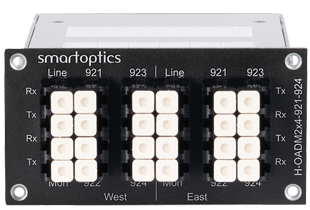
Passive Optical Networking
Passive optical networking solutions utilise fiber optics to connect your data from a single entry to multiple end points.
Our PON offerings are high density and cost-efficient platforms which are specifically designed to seamlessly integrate with other Smartoptics products, as well as those of competitors.
The Smartoptics passive optical filters in multiplexers and OADMs combine and route wavelength channels onto an optical transmission fiber. Products for both indoor and outdoor use are included in our portfolio. The range of passive CWDM/DWDM multiplexers and OADM modules allow up to 18 CWDM and 80 DWDM channels to be connected simultaneously over a pair of dark fibers. They are completely protocol transparent and suit applications including 100/10G Ethernet, SDH/SONET, 32/16/8/4/2/1G Fibre Channel/FICON, FTTx and CATV.
The Smartoptics H-Series is a high density, cost-efficient platform for passive optical layer nodes such as CWDM and DWDM multiplexers/demultiplexers and OADMs (Optical Add Drop Multiplexer). Using best-of-breed components, the H-Series offers the latest generation of solutions to your passive optical networking needs. Special attention has been paid to cost, density and flexibility, resulting in a 1 RU chassis housing a variety of filter modules and giving you up to five times higher packaging density than previous solutions. The H-Series is fully compatible with the ITU optical grid and interconnects seamlessly with Smartoptics transponder and muxponder product lines as well as with other vendors’ products.
Transponders
In networks in which transceivers are unable to be embedded directly in the switch, transponders provide the ideal solution to terminate the optical layer.
In configurations where it is not feasible or preferred to embed the transceivers directly in the switch, or when a demarcation point in an operator’s network is needed, the Smartoptics DCP family of transponders is the ideal product for terminating the optical layer. At the heart of the platform is the DCP-2, a 1U chassis that houses two DCP modules.
DCP-101 and DCP-108 are low power 100G transponder modules with front to back cooling. They have a QSFP28 client port(s) that accepts all standard transceiver types. DCP-101 is a single transponder for coherent 100G transmission and DCP-108 eight independent transponders to convert client signals to direct detect 100G DWDM (PAM4). DCP-1610 is a high-density, multichannel multi-rate transponder module offering independent xWDM transponders suitable for 40/10/1G Ethernet and 16/8G Fibre Channel transport. The channels are independent of each other and there are no restrictions on combinations of traffic. DCP-1610 offers additional value add features such as OTN forward error connection and Layer 1 encryption (AES 256).
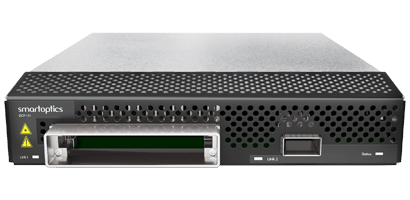
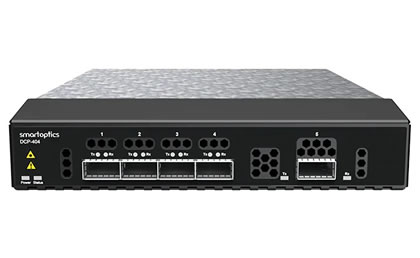
DCP-404: 4x 100GE Muxponder
The DCP-404 open muxponder is the perfect solution for 100G configurations that prioritise cost-effective multiplexing and efficient bandwidth utilisation. Its 400G OpenZR+ DWDM transceivers make it an ideal product for multiplexing 100G services at subscriber premises in a cost-efficient manner.
- Layer 1 Muxponder
- Support for 4 x QSFP28 ports for client signals
- Support for a flexible range of QSFP28 client type (SR4, LR4, CWDM4, ER4, ZR4)
- Support for one line module of Coherent 400ZR+ QSFP-DD or coherent 100G ZR+ QSFP-DD
- Support for multiple different line rates to ensure optical reach
- Low power consumption
- Low latency Design
DCP-1203: 3 Channel Transponder For 100/400ZR+
The DCP-1203 presents a budget-friendly remedy for 100G and 400G conveyance in a compact configuration, ensuring energy efficiency and reduced latency. The card contains three separate transponders, each of which can operate in either 100G or 400G modes. The client-side is adaptable, offering a range of QSFP28 client types for 100G and QSFP-DD for 400G. Meanwhile, the line side is compatible with coherent DWDM 100GZR+, 400GZR, and 400GZR+ QSFP-DDs.
- Layer 1 Transponder for DCP-2 chassis
- Support for 3 individual transponders with 100/400G on each
- Support for 3 x QSFP28/QSFP-DD ports for client signals
- Support for a flexible range of 100G QSFP28 client type in 100G mode (SR4, LR4, CWDM4, ER4, ZR4)
- Support for a flexible range of 400G QSFP-DD client type in 400G mode (DR4, FR4, LR4 etc.)
- Support for regeneration on two individual transponders at the same time
- Support for 4x100G breakout from DR4, FR4 or LR4 optics (from R9.0)
- Support for 100G ZR+, 400G ZR and 400GZR+ line rates
- Low power consumption
- Low latency Design
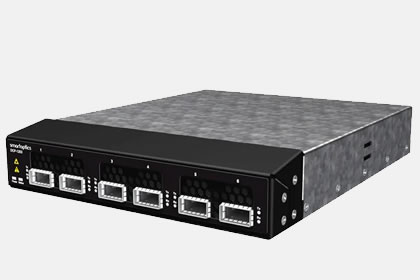
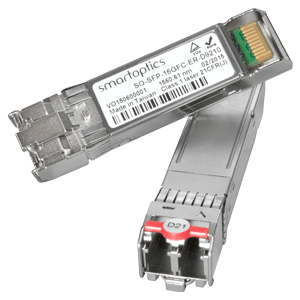
Optical Transceivers
Passive optical networking solutions utilise fiber optics to connect your data from a single entry to multiple end points.
Our PON offerings are high density and cost-efficient platforms which are specifically designed to seamlessly integrate with other Smartoptics products, as well as those of competitors’.
The Smartoptics passive optical filters in multiplexers and OADMs combine and route wavelength channels onto an optical transmission fiber. Products for both indoor and outdoor use are included in our portfolio. The range of passive CWDM/DWDM multiplexers and OADM modules allow up to 18 CWDM and 80 DWDM channels to be connected simultaneously over a pair of dark fibers. They are completely protocol transparent and suit applications including 100/10G Ethernet, SDH/SONET, 32/16/8/4/2/1G Fibre Channel/FICON, FTTx and CATV.
The Smartoptics H-Series is a high density, cost-efficient platform for passive optical layer nodes such as CWDM and DWDM multiplexers/demultiplexers and OADMs (Optical Add Drop Multiplexer). Using best-of-breed components, the H-Series offers the latest generation of solutions to your passive optical networking needs. Special attention has been paid to cost, density and flexibility, resulting in a 1 RU chassis housing a variety of filter modules and giving you up to five times higher packaging density than previous solutions. The H-Series is fully compatible with the ITU optical grid and interconnects seamlessly with Smartoptics transponder and muxponder product lines as well as with other vendors’ products.
DCP-R-34D-CS
For networks where wavelength manageability, capacity, and reliability are paramount, the Smartoptics DCP-R family of multidegree ROADMs is the ideal solution. Each DCP-R unit is a dedicated 1U per degree ROADM with advanced features like FlexGrid, directionless, contentionless, and colourless capabilities. Equipped with 34 WSS ports for local add/drop or express, it supports 400ZR transceivers and future coherent signals up to 800G. The DCP-R-34D-CS is perfect for ring or meshed metro/regional applications with up to 12 degrees. Managed via NetConf and supported by the SoSmart software suite, it offers automatic optical detection, flexible modulation format support, and scalable, cost-effective performance for modern network topologies.
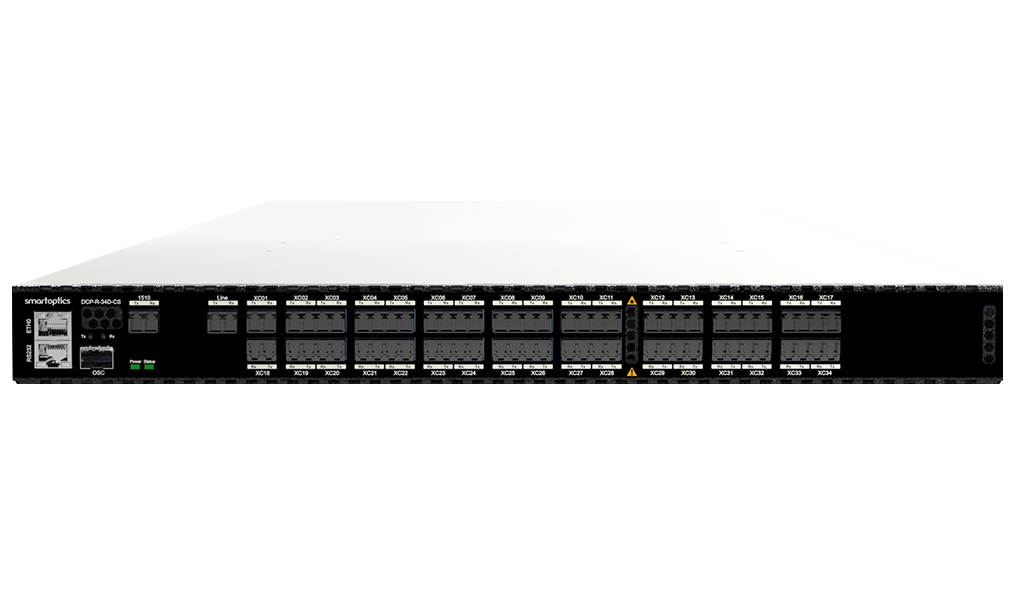
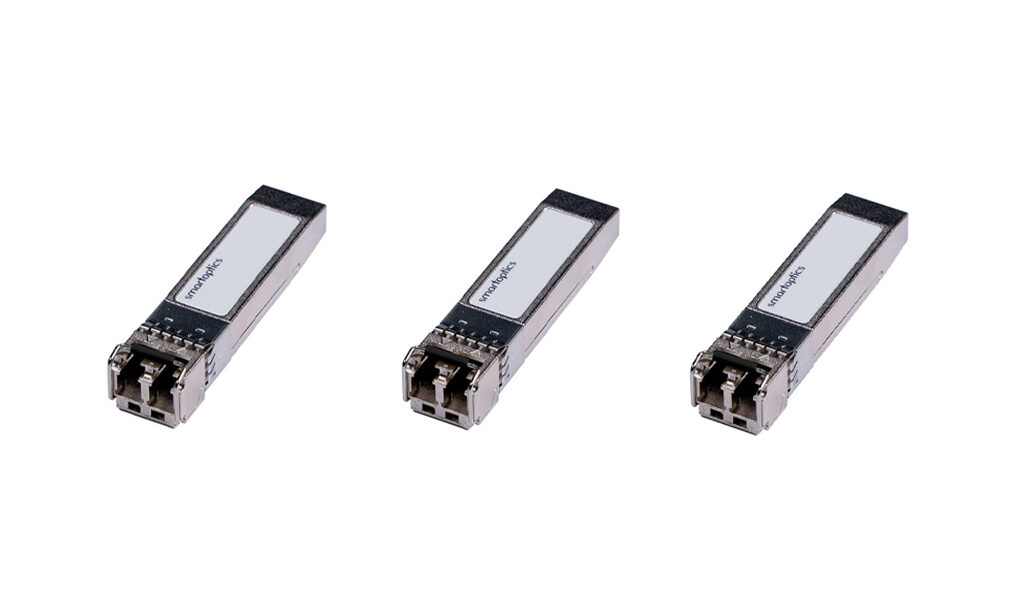
32G FC transceivers approved for Brocade Gen 7
Upgrading your DWDM optics to Smartoptics’ 16G and 32G FC transceivers, certified exclusively for Brocade Gen 7, ensures reliability and maximises DCI performance. The Smartoptics DCP-M active open line systems facilitate full utilisation of Brocade Gen 7 capabilities, offering embedded optics for easy installation. Replace existing systems from any vendor seamlessly, and configure as simply as a passive system. These upgrades enhance efficiency and resilience in securing mission-critical workloads and support 32G FC, 100G, and 400G Ethernet, creating significant operational synergies and future-proofing your infrastructure against evolving network demands.













